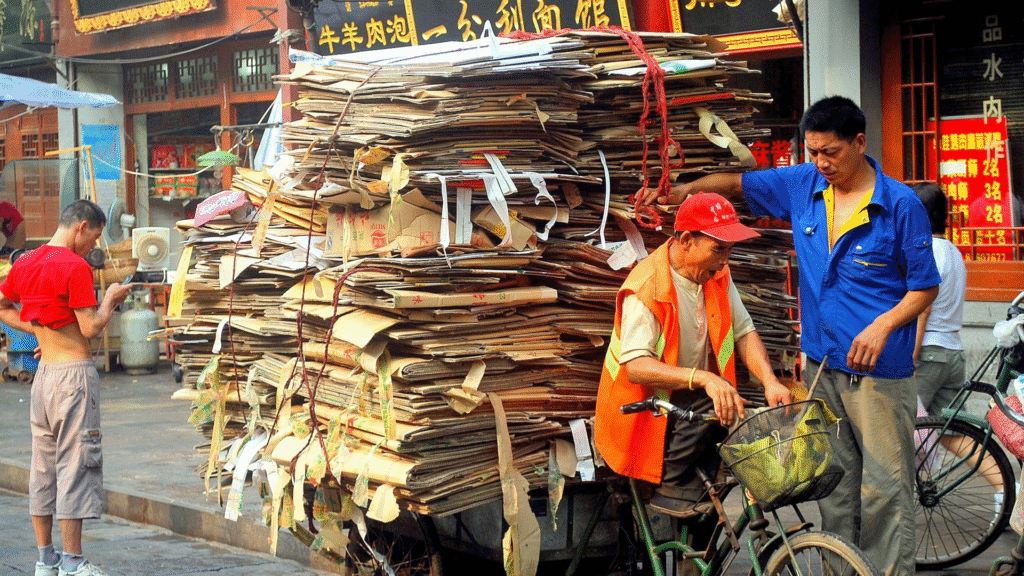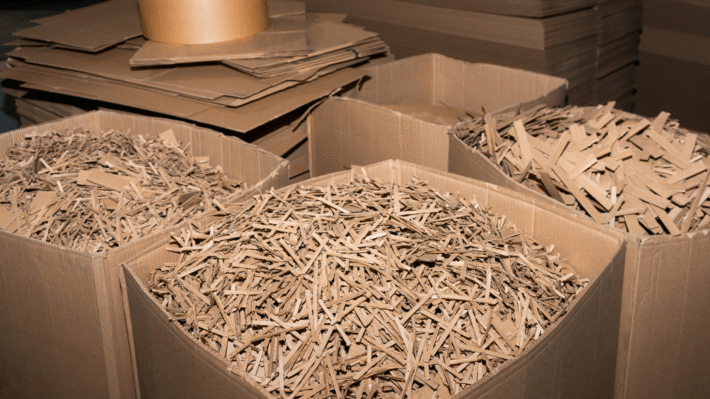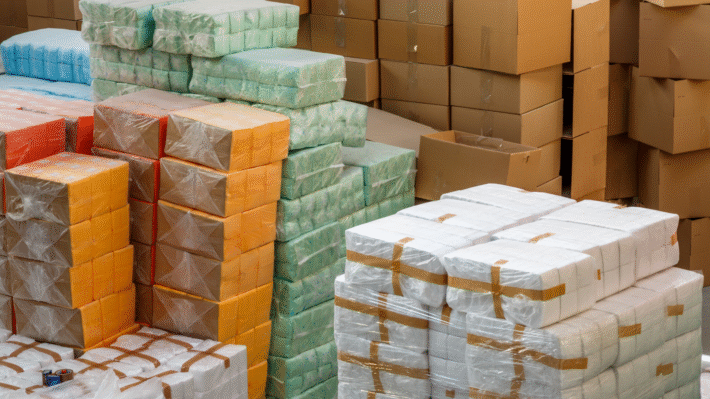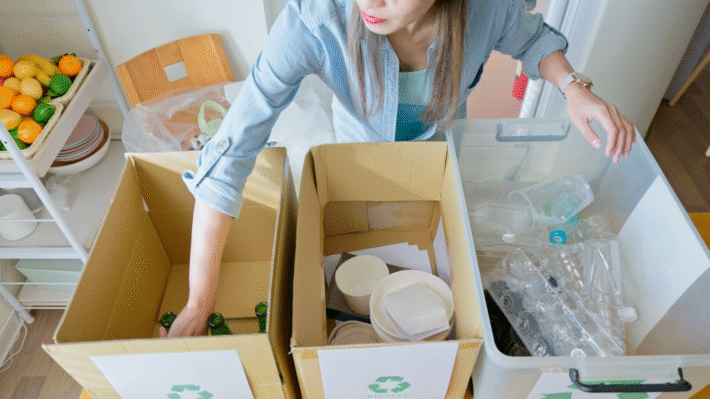Improving Recycling Infrastructure for a Greener Future

Let’s dive into the exciting world of recycling infrastructure! Right now, the world is facing a waste crisis, but we hold the key to transform it with remarkable recycling initiatives. Think about it: recycling doesn’t just protect our planet; it also bolsters our economy.
Unfortunately, current recycling rates are not where they need to be, meaning there’s a significant opportunity for improvement. By supporting the growth of effective, accessible recycling systems, we can make a genuine difference.
Picture a world where recycling is not just a chore, but a fundamental part of daily life—where every item has the potential to be reborn into something new, contributing to a sustainable circle of life. Together, we can create an efficient and comprehensive recycling system that benefits both our environment and our economy. Let’s get started on this journey!
Enhanced Collection Strategies
To solve our waste problem, we must have a plan for Enhanced Collection Strategies. These strategies could make recycling easy and efficient for everyone. Let’s dive in!
Identifying Gaps in Current Systems
Identifying the gaps in our current systems is the first step. When we find out where things are missing, we can make the systems stronger.
Improving Curbside Pickup
Improving curbside pickup is a great start! Having better trucks and more frequent collection ensures that no one is left with a pile of recyclables they can’t get rid of.
Creating More Drop-off Points
Creating more drop-off points will help too! By putting them in more places, more people can easily recycle, even if they can’t do so from home.
Introducing Innovative Collection Methods
Introducing innovative collection methods is exciting. How about using drones or special recycling vans? These could reach places the trucks can’t easily go.
Optimizing Collection with Technology
Optimizing collection with technology could be like adding superpowers to our recycling systems. Technology can make the process faster and smarter.
Using Smart Bins
Using smart bins is a clever idea. These bins can tell when they are full, or even sort recyclables correctly. Imagine never having to worry if you are putting the right item in the right bin!
Implementing Incentive Programs
Implementing incentive programs could encourage more people to recycle. Giving rewards for recycling, like a discount at local stores, will make it fun and rewarding to do the right thing.
When people see that Enhanced Collection Strategies can make recycling easy and meaningful, they will become more involved. Let’s all work together to improve our collection systems!
By bridging these gaps and using smart solutions, recycling can become a common practice everywhere in our community. Together, we can make our planet cleaner and greener.
Efficient Sorting and Processing
Sorting is the magic step in recycling that turns piles of items into treasure! When we talk about making sorting better, we think of smart machines and teamwork.
Adopting Advanced Technology
Technology is like a superhero for recycling. It makes everything faster and easier. Let’s peek at what these superhero gadgets are.
Robotic and Optical Sorting
Imagine robots in a factory, picking up items as quick as a wink! Robots can tell one material from another just by looking. Optical sorting gadgets can see what our eyes can’t. They scan items, sort them out, and make sure nothing gets lost or mixed. These machines work fast, saving us time and making sure everything gets recycled right.
The Role of AI in Recycling
AI, or artificial intelligence, is like the brainpower behind these machines. Think of AI as a super-smart friend who knows a lot about recyclables. It learns from what it sees and makes decisions like, “This is a plastic bottle; it goes here!” AI helps machines be smarter, reducing mistakes and improving efficiency in recycling centers.
Creating Collaborative Hubs
Bringing people and technology together makes recycling even better. Collaborative hubs are like big meeting spots where ideas are shared and things are sorted neatly.
Benefits of Standardized Labeling
When labels on packaging look the same, it’s like giving every item a name tag. It tells us what it is and where it should go. Standardized labeling helps hubs process items faster since everyone knows the rules. It avoids confusion and makes sorting smoother. Plus, it helps us all recycle right!
In the world of recycling, sorting with advanced tech and teamwork ensures we turn waste into something valuable again. Let’s keep building smarter systems for a cleaner world!
Expanding Recycling Capacity
Recycling matters! We need more places to recycle our stuff and make our world cleaner and greener. Let’s see how investing in recycling can help our planet.
Investing in Domestic Infrastructure
Investing in Domestic Infrastructure is a big step. When we put our minds (and dollars) into making our recycling systems right here at home, we’re securing a bright future. This means not just more recycling bins, but everything from sorting centers to trucks that carry recyclables to where they need to go.
Building More Facilities
Imagine a place where all our soda cans, paper, and glass bottles go to be sorted and recycled. We need more facilities like this. By building more facilities, we can handle all our recycling needs. More facilities mean more room to recycle everything we throw away. This helps reduce waste and turns it into something new and useful.
Upgrading Existing Systems
Our old systems can be like dusty old bicycles—still can ride, but could use a good tune-up. Upgrading what we have is just as important as building new. By upgrading existing systems, we’re talking about using newer, faster machines that sort our recyclables better. This makes our recycling process faster and more efficient. And it reduces the number of mistakes made when sorting recyclables.
It’s like giving an old engine a supercharged energy drink. Now it runs faster and smoother!
Developing Niche Recycling Sectors
Not everything can be recycled like a soda can or cereal box. Niche recycling sectors take care of those tricky items, like electronics and batteries. These sectors are important because they handle the recycling needs that are out of the ordinary. This is where clever ideas come into play, as we think of ways to recycle things that are harder to manage.
Think of old cell phones or broken Christmas lights. They contain valuable materials that can be used again, but they need special care to do so. By developing these areas, we make sure every piece of waste is seen as worth something.
Together, by expanding recycling capacity, we become a team that rises to meet the challenge of reducing waste and improving our environment. So let’s keep investing and creating new sectors, because every bit counts!
Fostering Innovation in Recycling
Innovation is the magic word that can change how we recycle. When we talk about innovation, we think about discovering new ways to make recycling better and faster. Here’s how we can do just that.
Research and Development Support
Research and Development Support is like the tools in our toolbelt for recycling. We need to support clever people who can come up with smart ideas to help us recycle more. The aim is to make recycling easier for everyone. By giving funds and setting up spaces where creative minds can come together, we can spur new ways of handling waste.
Tackling Difficult Materials
Tackling difficult materials is one of the big challenges in recycling. Some materials are tough nuts to crack. Things like batteries, electronics, and mixed plastics are not easy to recycle. But guess what? With the right ideas, we can solve this! By encouraging scientists and engineers to figure out new methods, we can ensure even the trickiest stuff gets recycled properly. Imagine a world where nothing is wasted and everything finds a new use!
So let’s embrace innovation in recycling and keep pushing for better solutions. The future is bright when recycling becomes smarter and easier for everyone.
Addressing Recycling Contamination
Recycling contamination is when non-recyclable stuff mixes with things that can be recycled. This messes up the whole recycling process. When things like plastic bags, dirty food containers, or the wrong types of plastics get into recycling bins, they can ruin a whole batch of recyclables. Sometimes, these mistakes even hurt the machines that do the recycling work. To fix this problem and get more folks recycling the right way, we need to focus on two big things: education and better infrastructure.
Education and Awareness Campaigns
Education and Awareness Campaigns play a huge role in cleaning up our recycling act. When people know what can and can’t be recycled, they make fewer mistakes. Imagine if everyone knew that crushing cans and rinsing out milk jugs could make a big difference. Schools and community centers can host fun events to teach kids and adults alike the ins and outs of recycling right.
Awareness Campaigns can be just as exciting as they are informative. Think of colorful posters, catchy songs, and even social media challenges that spread the word. These tools help people remember what’s what in the recycling world. They are like friendly reminders telling us to do the right thing. We all love a good reminder, don’t we?
Improving Infrastructure
But education is only part of the story. We also have to change the way our recycling systems are set up. This is where Improving Infrastructure steps in.
Dedicated Bins
Dedicated Bins are super important. If each type of recyclable had its own special bin, it would be so much easier to keep things straight. Imagine walking around your neighborhood and seeing bright blue bins for paper, green bins for glass, and yellow bins for plastic. You wouldn’t have to think twice about where to toss your water bottle or old newspaper.
And it’s not just about colors. These bins should be clearly labeled. “Papers Here” or “Glass Only” signs can make it crystal clear what goes where. This simple step can cut down on mistakes and make the sorting process much easier.
Effective Signage
Effective Signage is like the cherry on top of a well-organized recycling effort. You’ve probably seen signs that are too wordy or just plain confusing. They might make you scratch your head! To keep things simple, signs should use easy language and big pictures.
Imagine a sign with an image of a soda can and a checkmark right next to it. Ah, clear as day! Words like “Recycle” paired with icons of cans, bottles, and cardboard boxes can do wonders. Plus, placing these signs at eye level means more folks will see and read them.
So, here’s the deal: when Education and Infrastructure go hand in hand, recycling contamination doesn’t stand a chance. By teaching people and setting up systems that are easy to follow, we can keep our recycling streams pure and do something amazing for our planet.
Implementing Recycling Initiatives
Let’s dive into the exciting world of recycling initiatives. By working together, we can make recycling systems better and stronger. It’s all about partnering, policy-making, and keeping track of progress.
Forming Key Partnerships
Working together is key. By joining forces, we can create a better future for recycling. Let’s start with partnerships.
Government and Business Collaboration
When governments and businesses work together, they can come up with smart solutions for recycling. Businesses can innovate and come up with new ways to recycle, and the government can help by making rules and policies that support these ideas. By collaborating, they can build better recycling systems that benefit everyone.
The Role of NGOs
Non-Governmental Organizations (NGOs) can really help out in making recycling initiatives work. They often educate people about the importance of recycling and make it easier for communities to get involved. NGOs can connect folks, create awareness, and support local recycling programs. They’re like the glue that holds these partnerships together.
Policy and Financial Strategies
Policies and money are also important for recycling initiatives to succeed. Let’s get into the details.
Extended Producer Responsibility
Extended Producer Responsibility, often called EPR, means that companies take more responsibility for the waste their products create. This policy encourages businesses to design products that are easier to recycle and to manage the waste after the product is used. This way, more items end up getting recycled, and less trash goes to the landfill.
Virgin Material Tax
A virgin material tax means that companies have to pay a little more when they use brand new materials instead of recycled ones. This encourages them to use recycled materials, which is better for the environment. It’s like a little nudge to remind them to think green!
Grants and Subsidies
Sometimes, governments give out grants and subsidies to support recycling programs. These funds can help with things like building new recycling facilities or creating education campaigns. By providing financial support, governments can make recycling more widespread and effective.
Monitoring and Evaluation of Progress
Finally, it’s important to check how well our recycling initiatives are working. By monitoring and evaluating, we can see what’s working well and what needs a bit of tweaking. Regular checks help us keep moving forward, making sure every effort counts. This constant evaluation ensures we’re on the right path to a cleaner, greener earth.
By focusing on partnerships, policies, and continuous checks, we can build strong recycling initiatives that will last. Working together, we can all make a difference.



